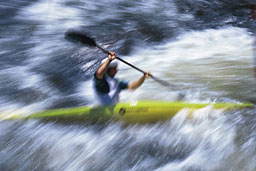Kayaking Injuries

What are Kayaking Injuries?
Kayaking is an outdoor activity enjoyed by many people of all ages and fitness levels.
It is considered a challenging sport, though kayakers who stick to easier classes of this sport, rather than kayaking through rapids, are unlikely to become seriously injured.
However, injuries can occur if your skills or equipment are not sufficient for the pace and course you are on.
Types of Kayaking Injuries
Kayaking is a sport that places a lot of strain on the upper body, as kayakers use their arms to pivot their kayak and move through the water. The motion required to paddle a kayak, like canoes and paddle boards, require a lot of repetitive movements. For this reason, certain overuse injuries are common in kayakers.
- Wrist Injuries: The repetitive motion of moving the paddles when kayaking can lead to overuse injuries in the wrist joints over time.
- Tendon Injuries: The most common injury while kayaking is De Quervain’s Tenosynovitis. Another tendinitis is intersection syndrome.
- Impact Injuries: If a person comes too close to natural structures or falls into the water, they risk getting hit by their kayak, paddle, or other stationary and floating objects.
Characteristics and Clinical Presentation of Kayaking Injuries
Painful inflammation of tendons in the wrist caused by increased friction in the wrist. This usually occurs in the wrist, behind the thumb, where tendons intersect or pass through and under narrow tunnels and ligaments.
In severe cases of kayaking wrist injuries, patients report a squeaking noise, clinically called crepitus, in their wrist.
Regions affected by a kayaking injury become inflamed and painful. Scar tissue can develop in the wrist and other affected areas, causing a chronic problem.
Causes of Kayaking Injuries
Generally, rapid repetitive movements of the thumb, wrist, and elbow results in kayaking injuries. However, there are other factors that contribute to them:
Inexperience
Beginners may be more prone to injury because they lack the endurance, skills or techniques to meet the demands of the sport.
Poor technique
Improper body posture and core and shoulder strength can contribute to unnecessary strain on joints, muscles, or ligaments in the hand, wrist, and elbow.
Accidents
Kayaking can be a fun activity. Be prepared. Life jackets, personal floatation devices, and helmets are essential safety gear while kayaking.
Getting a Diagnosis for Kayaking Injuries
In most cases, a physical examination is enough for a diagnosis. However, in some cases, MRIs may be used to determine the extent of injuries, especially those considered to be chronic.
Treatment Options for Kayaking Injuries
Generally, the best treatment for Repetitive Strain Injuries or inflammation is rest. Splints may also be recommended for the affected area. If these steps aren’t successful, corticosteroid injections into the affected regions can provide instant relief.
Surgery to repair damaged ligaments or tendons may be required in some cases.
Conservative Treatments
Whenever possible, the hand surgeons at HandSport Surgery Institute prefer to use conservative treatments to treat a kayaking injury rather than a procedure.
Repetitive strain injuries can often be treated with rest, NSAIDs, a corticosteroid injection, and splinting.
The R.I.C.E method is also helpful in promoting healing:
- Rest: Minimize use of your wrist and elbow while healing.
- Ice: use an ice pack for 15-20 minutes a day divided into brief applications.
- Compression: properly applied compression bandages can help reduce initial swelling.
- Elevation: keep your wrist above your heart to reduce swelling.
Surgical Treatments
Surgery for kayaking injuries may include tendon decompression by releasing constricting compartments through which they travel. Debridement of swollen tenosynovium and attritional tendon tears are treated concurrently.
Preventing an Injury from Kayaking
Every kayaker should take courses that match their strength and level of skill. If a kayaker moves too quickly through levels, they may make themselves more prone to injury.
Kayakers should focus on strength and stamina training outside of their kayak so that their strength is appropriately built to handle the rigors of kayaking. Additionally, kayakers should:
- Wear appropriate protective gear.
- Use a paddle appropriate for your size and skill level.
- Never overload your kayak.
- Keep your equipment in good repair.
Prognosis for Kayaking Injuries
Kayakers may experience a wide variety of injuries to their entire body. However, in terms of hand, wrist, and elbow injuries, most kayakers have a good prognosis for their injuries.
With the right diagnosis and treatment plan, many kayakers can recover from their injury with conservative treatments. If surgery is indicated, working with a talented team as soon as possible after an injury can improve their prognosis
If You Believe You Have a Kayaking Injury, Contact HandSport Surgery Institute.
Please contact us as soon as possible to schedule an appointment with our hand surgeons. People who have been hurt while kayaking should be evaluated to try and prevent further injury and mobility issues.
If you have been injured, it’s important to be evaluated by a highly skilled professional. Call Drs. Mark and Jason Pruzansky at 212-249-8700 to schedule an appointment and obtain an accurate diagnosis.



